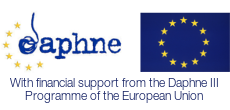
Microsite Alternatives to Custody for Young Offenders
The Model
The model is structured around three ‘workstreams’ – research; mutual learning; dissemination and sustainability – and includes a training programme and briefing documents designed to be effective tools for multi-agency networks, and in particular foster carers, fostering and youth justice staff, criminal justice and police personnel. Outputs also include proposed core minimum standards; practice guidelines; and information designed for young people.
Seeking to build an interconnection between welfare and justice systems in dealing with young offenders, the project acknowledges the added value of more systematic mutual learning between different regions in Europe, and aims to put into practice the positive lessons learned in other sectors, such as the latest developments in many EU Countries relating to the deinstitutionalization process.
The choice of strategy was guided by the following criteria monitored throughout the project: relevance of project contribution to the objectives of the Daphne project, potential benefits for target groups and final beneficiaries, successfully working with other ongoing initiatives, cost-benefit analysis, technical and political feasibility.
Finally, the project’s dissemination strategy targets governments and practitioners as well as the media and each society as a whole, with the aim of challenging discriminatory and negative stereotyping of youth offenders. Advocacy activities targeting decision makers is also built into the project, making innovative and cost-effective strategies available for policy makers, and clearing the way for the pro-active development of alternative interventions to custodial measures.
